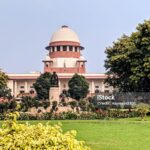
Reopening of Settled Issues Impermissible:
The High Court invoked review jurisdiction on the ground that there were “errors apparent on the face of the record.” The Supreme Court found no such apparent error. The issue of eligibility and cut-off marks had been consciously considered in the original judgment. Therefore, the review order was beyond permissible limits.

Applicability of Juvenile Justice Act, 2000: Although the offence occurred when the Children’s Act, 1960 was in force, the Court held that under Section 7-A of the Juvenile Justice (Care and Protection of Children) Act, 2000, the claim of juvenility can be raised at any stage, even after final disposal of the case. Thus, the Court was bound to consider it.

Scope of Supreme Court Interference (Article 136): The Court reiterated that when an appeal is filed under Article 136 against a reversal of acquittal, it does not normally reappreciate evidence unless the High Court’s finding is manifestly perverse, legally erroneous, or based on a grave miscarriage of justice.
Since the existence of artificial means (holes or wires) was not proved beyond reasonable doubt, the legal presumption under Section 39 could not be triggered.
There was also no proof that the holes were made by the accused or that they even existed at the time of installation.
Substance of the instrument determines the stamp duty — not the title.
The Court emphasized that the real nature of an instrument is determined by its substance and operative clauses, not by its nomenclature.
Article 57 applies only when a surety executes the document.
Under Article 57, the document must be executed by a surety—someone who guarantees the performance of another person’s obligations.
Here, the appellant company itself executed the document to secure its own performance. There was no third-party surety. Hence, Article 57 could not apply.
Article 40 applies to mortgage deeds executed by the principal debtor.
Since the company (principal debtor) mortgaged its own property, the deed was rightly chargeable under Article 40 of Schedule 1-B, not under Article 57.
Procedural law as an aid to justice:
The Court reiterated the principle stated by Justice V.R. Krishna Iyer that procedural law is meant to serve justice, not obstruct it. Courts must avoid a rigid adherence to procedural technicalities when such rigidity results in injustice. The object of procedural rules is to advance justice and not to defeat it.
Substantial justice must prevail:
Since the denial of the opportunity to file a written statement and cross-examine deprived the defendant of a fair trial, substantial justice demanded restoration of those rights.
Concurrent findings not immune from interference – Although the Tribunal and High Court gave concurrent findings that the deceased was not a bona fide passenger, the Supreme Court held that such findings can be interfered with when they ignore material evidence like the DRM report verifying the ticket.

High Court exceeded its jurisdiction –
The Supreme Court held that the Rajasthan High Court acted without jurisdiction by recalling and reviewing its earlier order dated 16 January 2025 while exercising powers under Section 528 BNSS [Section 482 CrPC]. The inherent powers of the High Court cannot be used to review or recall its own judicial order except to correct a clerical or typographical error.

historical chain of registered documents and subsequent issuance of separate pattas clearly proved that the property was a distinct, legally recognized parcel prior to 1975.
Recognition Through Pattas:
The issuance of separate pattas in the name of Syed Ali Ispahani by the revenue authorities amounted to official recognition of independent ownership and possession. Such public records corroborated the existence of a lawful sub-division.

The intent of that judgment was to protect those who lost livelihood and had no means to challenge the State, not to extend benefit to commercial or industrial entities like M/s Santi Ceramics.
Non-application of mind by the authorities as both the LAC and State Government failed to objectively consider the objections and recommendations as mandated under the 1894 Act;

Nature of voice samples — not self-incriminatory
Nature of voice samples — not self-incriminatory
The Court reaffirmed that a voice sample, like a fingerprint or handwriting sample, is “material evidence” used only for comparison. It is not a statement or testimony revealing guilt by itself. Therefore,
taking such a sample does not violate Article 20(3) of the Constitution.

Rajendra Singh and his father Amrik Singh allegedly submitted false affidavits and forged documents to obtain the certificate.the allegations warranted a full-fledged trial, not premature quashing.
The Supreme Court found that the High Court, instead of examining whether a prima facie case was made out, had virtually conducted a mini-trial by assessing the sufficiency of evidence and drawing conjectures about the accused’s “legal illiteracy”. Such an approach was beyond the permissible scope of a quash petition under Section 482 Crpc

Improper declaration of witness as hostile:
The Supreme Court criticized the casual practice of prosecutors treating witnesses as hostile without sufficient justification. +++The Court observed that before a witness can be declared hostile under Section 154 of the Evidence Act (now Section 157 of the BSA, 2023), there must be material showing that the witness is not speaking the truth or has exhibited hostility. Courts must exercise this discretion sparingly and judiciously, not routinely.No ground for interference:
Finding the concurrent judgments of the trial court and High Court to be well-reasoned and based on proper appreciation of evidence, the Supreme Court dismissed the appeal.